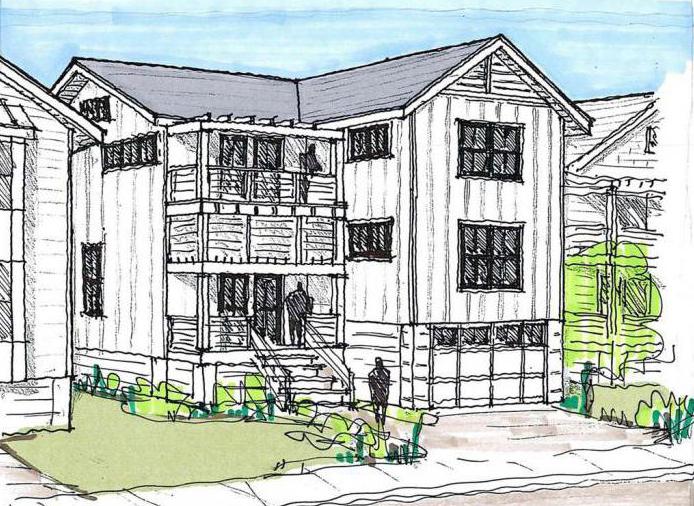Recognition of the right of ownership by inheritance takes a significant share in the entire volume of cases when the issue of the future property is being decided, to whom it will pass over time.
The system of transfer of property of the deceased
Recognition of the right of ownership by inheritance is the activity of authorities aimed at securing the transfer of property to heirs.
In the absence of difficulties, the process is as follows:
- a notary accepts a statement from the heirs, collects documents for property left from the deceased;
- the notary draws up a certificate of inheritance, reflecting the list of hereditary property, its volume, value and shares, which went to each of them.
Recognition of the right of ownership by inheritance by going to court is a rather exceptional phenomenon. The court intervenes in the process of inheritance, when the notary is confronted with obstacles that do not allow solving the problem of registration of the inheritance. Almost always, the further presence of a notary is subsequently excluded.
Legislative regulation
The recognition of property rights by inheritance is regulated by a whole list of legislative acts:
- The Civil Code establishes ways to protect rights, the order of inheritance, ways of its distribution and execution.
- The Land Code governs relations in the exercise of land rights.
- The Code of Civil Procedure establishes a procedure for the consideration of civil cases, and in particular claims for the recognition of property rights by inheritance.

The explanations of the Federal Tax Service and the Supreme Court, showing how to put the norms of legislation into practice, stand apart. Case law reviews show the application of norms in specific cases.
The role of the court
The court in the course of the proceedings, regardless of what claims have been put forward, checks the legality of the ownership of the property, whether the testator really had rights to it, and whether he filled out the documents. It is ascertained whether the refusal of the application to register was legal, it is checked whether the plaintiff has the right to inherit or not, and other circumstances that the court considers necessary to find out.

A notary acts on the basis of the law in a clearly defined framework. The specifics of the judge’s activity in the law is to make a decision, the code formally does not fully understand what to do next. However, a judge is also limited by law. A significant role is played by the existing judicial practice.
Options for going to court
The decision on the recognition of ownership by inheritance is made if the owner had not had time to complete his rights by registering them before. This affects car or property rights. Where registration is not provided, such a problem does not arise.
The law gives the right to choose the second option - ask the court to include the property in the inheritance. An application with documents is sent to the court six months after the death of the owner. The court decision removes the barriers to the notary in further work with the heirs.

The claim for recognition of ownership by inheritance is filed after the expiration of a six-month period, the requests to the court are different, but the grounds are the same. If the lawsuit is filed before the deadline, the proceedings are suspended. After six months have passed, the judge decides what to do next. It is likely that the lawsuit will lose relevance.
What is the confusion?
For a number of reasons, the heir may turn to a notary public late, but not enough documents. For this purpose, an application is submitted in order to obtain recognition as a successor. After receiving a court decision, the notary continues to work with documents.
If there is no complete set of title documents, a lawsuit is filed. The judge confirms the rights to the property and that the applicant actually accepted the inheritance.
Additional legal nuances
The deceased could be the heir or own property on the basis of acquisitive prescription. Then the right of ownership arises from the ownership of real estate for at least 15 years. How to act in this case? Is it necessary to recognize the right of a deceased person in court? No, after death, the ability to obtain new rights and obligations ceases. In a lawsuit, the heir must, for example, prove that the deceased was a bona fide acquirer.

Further, the plaintiff asks the court to recognize the ownership right for him as the heir, because of the possession of such a right by the testator. Thus, the recognition of the property right of the deceased by inheritance or prescription is made indirectly, and not directly.
The outcome of the review depends on the amount of evidence and allegations provided by the plaintiff or his representative.
How to write a statement?
Despite the similarity of cases, they have their own nuances, which must be taken into account. Otherwise, the court will not accept the lawsuit or the judge will make a negative decision. The difficulty is that for the same reasons, the same plaintiffs are not allowed to file a lawsuit.

Before filing a lawsuit, a number of questions are clarified:
- who is the plaintiff;
- who is the defendant;
- which court to apply to;
- what to collect a set of documents;
- calculate the amount of state duty.
Parties to the case
The plaintiff is the heir or heirs, the defendant is the local district municipal administration or property administration. They are attracted due to the fact that they are engaged in the registration of property into state ownership, if no other applicants were found.

If an application is submitted only on the recognition of the fact of inheritance, a notary is recognized as an interested person. If the goal is to obtain recognition of the right from the court, then the notary is involved as a third party, and the property agency as a defendant. A set of documents is prepared for each of them.
If the deceased claimed property that formally did not have an owner, the heir makes a statement to establish the fact of fair ownership.
If the deceased owned the property for at least 15 years, then with the acceptance of the inheritance, the countdown of the tenure continues, and the new owner files the claim for recognition of the right or statement of fact.
Perhaps he will have to wait for the right length of time to pass at the time of going to court.
Which court to go to?
What is the jurisdiction in the recognition of ownership by inheritance?
As a general rule, an inheritance is opened in a place of permanent residence before death. If there is no information about a permanent place of residence or most of the property is located in another area, then, if necessary, a court application is sent to where most of the property is located.
If it comes to real estate, the lawsuit is sent to the court, which serves the area of its location, regardless of where the inheritance was opened.

They turn most often to the district court. He decides all cases of establishing facts, property disputes, where the price of property is above 50 thousand rubles.
Recognition of the right of ownership of a car by inheritance may also occur through a magistrate's court if its price is less than 50 thousand rubles.
Which documents to collect?
The set of documents is approximately the same:
- death certificate;
- papers confirming the existence of objects (cadastral or technical passport, vehicle passport);
- documents confirming the testator's rights to the property (contracts, court decisions, documents confirming the care of the property, payment of taxes, etc.).
- documents showing that the heir accepted the inheritance (paid utility bills, taxes, repaired, performed other actions);
- certificate from the notary of the right to inheritance, if issued;
- motivated refusal by a notary to issue a certificate of inheritance.
The absence of documents from a notary gives the court the right to consider that there is no reason to turn to him for recognition of the right. A reference in a lawsuit to an oral statement is not considered a sufficient argument.
How to calculate the fee?
Its value is established by the Tax Code. How is the state duty calculated upon recognition of ownership in the order of inheritance? Based on the market price of the property. The plaintiff invites a preliminary appraiser. A copy of the report must be attached to the claim.
The duty is paid in the following sizes:
- 4% of the amount up to 20 thousand, but not less than 400 rubles;
- within 20-100 thousand 800 rubles. and 3% of the amount that exceeds the mark of 20 thousand .;
- from 100 to 200 thousand rubles. in the amount of 3200 and 2% over 100 thousand;
- from 200 001 to 1 million in the amount of 5200 and 1%, over 200 thousand;
- from 1 million - 13,200 rubles. and 0.5%
- the maximum allowable duty is 60 thousand rubles.
Pattern for writing a lawsuit, template
Here you must specify the following:
- name of the court to which the claim is directed;
- Name of plaintiff, his address, postal code;
- name of the organization of the defendant;
- Name and address of the notary's office - third party;
- statement of circumstances that compelled to apply to court;
- references to legislation;
- court requests;
- the price of the claim in rubles (equivalent to the valuation of the appraiser);
- Appendix - list of documents;
- signature, date of filing;
- receipt of payment of the fee, the original is handed over to the court.
Where can I find a claim or a model for the recognition of ownership by inheritance?
There are many options in open access, but it is best to contact a lawyer so that he takes into account all the nuances of the situation and tells what documents to collect.
Sometimes it is necessary to demand evidence through the court, for which the correct wording of the application is necessary.
Limitation of actions
Claims of ownership over inheritance are not limited to time frames. They are taken into account if there is a dispute about the rights to property between several heirs, one of which did not declare on time his desire to take part in the inheritance.
A new distribution of already registered property is also allowed under the limitation period. By the way, she does not act automatically unless the defendant declares it at any time until the judge leaves the courtroom to make a decision.
The judge is obliged to accept such a statement of claim; he is not entitled to refuse it on the basis of a passage of the limitation period, as well as to prompt this to the other side.
The help of a lawyer can solve the problem of missing a deadline, if any. It is possible that he didn’t actually exist, and the plaintiff nevertheless accepted the inheritance, although he did not fully understand the legal significance of his actions.
The described cases differ not so much in complexity as in the abundance of all kinds of nuances, which, if not taken into account, can negatively affect the process or slow it down, which is also not very good.